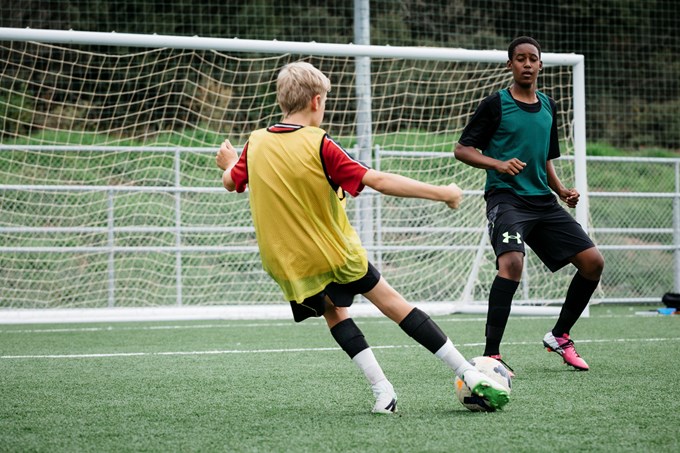In the fifth part of our series, we look at the council's initiatives to improve Auckland's sport fields.
Mark Bowater has, for the last eight years, been dedicated to making sports fields more playable for all Aucklanders. As Auckland Council’s Acting General Manager of Parks, Sport & Recreation, developing the city’s parks to boost the number of hours they can be played on is a priority.
“There were common issues around the region in terms of sports field provision, wet weather field closures and game cancellations, and growing levels of demand,” Mark explains. “I wanted to tackle the problem and make a difference.”
A regional approach
Despite works on the Sports Field Capacity Development programme starting in 2007, Mark says the creation of the ‘super city’ in 2010 really helped kick off the project.
Since then, new artificial pitches have been installed at Ellerslie, Westmere, Ranui, Howick, Albany, Forrest Hill and Titirangi sports parks, increasing playing-time capacity by 195 hours per week.
“The creation of Auckland Council provided a great opportunity to take a regional approach to resolving community issues with a lack of sports field capacity,” he says.
“The Auckland Plan has clear targets around activating Aucklanders, of all ages, and increasing participation levels in sport and recreation. This has ongoing health benefits for our communities. Multi-functional, high capacity outdoor playing fields are a big contributor to those outcomes,” says Mark.
More play time for Kiwi kids
“In the last three years, $55 million has been invested in Auckland’s sports fields. Of that, $43 million has been spent on boosting capacity, meaning 53 new sand carpet fields, 12 new artificial turf fields, 11 new soil fields and numerous fields having their drainage improved. The latter means we can avoid closing fields due to boggy conditions,” says Mark.

“About $12 million has gone into renewing our sports fields – mainly installing sand carpet surfaces and floodlights at some locations,” Mark says. This means more Kiwi kids playing sport, staying fit and having fun, longer,” he adds.
“We still have a 10-year projected shortfall of 1600 playing hours per week,” says Mark.
But the keen sportsman and his team have, over the last three years, delivered an additional 800 hours of playing time across Auckland due to upgrades.
Investment for future generations
“One of the key benefits has come from the introduction of synthetic surfaces – all weather synthetic pitches which can accommodate high levels of training and play without weather-related closures. This means sports clubs and codes have reliable playing facilities of consistent quality.”
Hibiscus and Bays Local Board, for example, has seen the highest level of investment in sports fields, to the tune of $5.8 million.
Seddon Fields, where hundreds of players use the fields weekly, have benefited from upgrades under Auckland Council’s Sports Field Capacity Development Programme.
“Our city is growing rapidly,” Mark explains. “We have close to six million booked participations on our 800 sports fields every year, and demand continues to grow along with our population growth.
“It is expensive to continue to buy new land for sports fields, so our primary strategy is increasing the capacity of the existing network, and also partnering with others, like schools to host games.
“When young children join a sports team, they just want to be able to have fun, learn how to be part of a team and have reliable fields to train and play on. The factors don’t change too much as we get older, but the expectations do. The capital investment we are making in increasing sports field capacity provides many long lasting community benefits.”
Mark says the work is worth it just to see how much more fun communities and teams have on playable fields.
“It’s a privilege to be able to help make such a difference for our communities, for current and future generations to enjoy.”
Quick stats:
- 12.25 artificial turf fields plus floodlights
- 53.5 fields new sand carpets
- 1 field sand slits
- 30 fields floodlights
- 11 new soil fields
- 31 fields irrigation
- 9 fields drainage improvements.
Future investment
- From 2015 to 2018, the council will spent $42.4 million on the capacity programme.
- Of this, $29.9 million will be spent on new sand carpet fields, floodlights, fibre-reinforced sports fields, artificial turfs.
- The remaining $12.5 million will fund three new hockey turfs, 27 netball courts, public toilets and changing rooms for sports parks.



